In the world of entrepreneurship, the term visionary carries a unique weight. It’s a title reserved for those who see beyond the horizon, who dream big and who inspire others to reach for the skies. Visionaries are the architects of innovation, the minds behind transformative ideas that drive progress. In the Entrepreneurial Operating System® (EOS), the role of the visionary is not just acknowledged but celebrated as a critical component of business success.
But what makes a visionary so vital? And how can businesses harness the full potential of their visionary leaders? The answer lies in understanding that visionaries are meant to fly and when businesses capitalize on their strengths, they can soar to new heights.
The Essence of a Visionary
Visionaries are often characterized by their ability to see the future before others can even imagine it. They have a knack for identifying opportunities, envisioning possibilities and rallying people around a common goal. This big-picture thinking is what sets them apart from the rest.
In EOS, the visionary is typically the founder or CEO of the company, the person who birthed the idea that became the business. They are the dreamers, the creative thinkers and the ones who set the tone for the company’s culture and direction. Visionaries are not just leaders; they are the ones who see the potential in what could be and push the boundaries of what is possible.
However, this strength in big thinking also means that visionaries often struggle with the day-to-day operations of the business. They thrive on ideas and inspiration but may find themselves bogged down by details, processes and routine tasks. This is where the unique structure of EOS comes into play, allowing visionaries to focus on what they do best while others manage the operational aspects of the business.
Visionaries Are Meant to Fly
Visionaries are meant to fly wholeheartedly captures the essence of what it means to be a visionary. Just as a bird is born to soar above the earth, a visionary is meant to think beyond the ordinary and push the limits of what’s possible. This natural inclination towards big thinking is what drives innovation and growth within a business.
When businesses recognize this and create an environment that allows their visionaries to fly, they unlock a powerful source of competitive advantage. Visionaries need space to dream, to strategize and to explore new ideas without being tethered to the ground by the demands of day-to-day operations.
This doesn’t mean that visionaries should be disconnected from the business’s realities, but rather that their role should be focused on guiding the overall direction and ensuring that the company remains aligned with its long-term vision. In doing so, businesses can capitalize on the visionary’s strengths and create a dynamic where innovation and execution go hand in hand.
The Role of the Integrator
To enable visionaries to fully realize their potential, the EOS framework introduces the role of the Integrator. The Integrator is the counterbalance to the visionary, responsible for translating the visionary’s ideas into actionable plans and ensuring that the business operates smoothly. Many times I often refer to the Integrator as the Yin to the Visionary’s Yang.
While the visionary is looking to the future, the Integrator is managing the present. This partnership is the cornerstone of a successful EOS implementation, as it allows the visionary to focus on what they do best—big thinking and strategic direction—while the Integrator handles the execution and management of the team.
In this way, the Integrator becomes the tether that keeps the visionary grounded, ensuring that their ideas are not just lofty dreams but achievable goals. This balance between vision and execution is what propels businesses forward, allowing them to innovate while maintaining a strong operational foundation.
Capitalizing on Visionary Strengths
For businesses to capitalize on the strengths of their visionary leaders, they must first acknowledge and embrace the unique value that visionaries bring to the table. This means creating a culture that encourages big thinking and innovation where new ideas are welcomed and explored rather than dismissed or sidelined. Yes, that actually means considering and vetting through the mass of ideas that a visionary will constantly be bringing to the table.
Businesses can also capitalize on visionary strengths by aligning their structure and processes with the visionary’s natural inclinations. This might involve delegating operational tasks to the Integrator and other team members, freeing up the visionary to focus on strategy, vision and growth.
Another key aspect of capitalizing on visionary strengths is communication. Visionaries need to be able to articulate their vision clearly and inspire others to buy into it. This requires not only strong communication skills but also a team that is receptive and capable of translating that vision into reality.
The Impact of Visionary Leadership
When businesses capitalize on the strengths of their visionary leaders, the impact can be profound. Visionary leadership drives innovation, fosters a culture of creativity and sets the stage for long-term success. Companies led by strong visionaries are often at the forefront of their industries, pioneering new products, services and business models that others eventually follow.
Moreover, visionary leadership can also lead to increased employee engagement and satisfaction. When employees are aligned with a compelling vision and feel that they are part of something bigger than themselves, they are more likely to be motivated, productive and committed to the company’s success.
Nurturing the Next Generation of Visionaries
As businesses grow and evolve, it’s important to nurture the next generation of visionary leaders. This involves identifying individuals within the organization who exhibit visionary traits and providing them with the support, resources and mentorship they need to develop their abilities. (Taking the Rocket Fuel V/I Crystallizer Quiz is a great place to start to see if you have an idividiual mentally living up in the clouds!)
By fostering a culture of innovation and big thinking, businesses can ensure that they are always looking to the future and are prepared to adapt to changing market conditions. This forward-thinking approach is essential for long-term success, as it enables businesses to stay ahead of the curve and continue to innovate in an increasingly competitive landscape.
Conclusion: Let Your Visionaries Fly
Visionaries are meant to fly and when businesses allow them to do so, the results can be transformative. By embracing the strengths of their visionary leaders and creating an environment that supports big thinking, businesses can unlock new opportunities for growth, innovation and success.
In the end, the key to capitalizing on visionary strengths lies in understanding their unique role within the organization and ensuring that they have the space, support and partnership they need to soar. With the right balance of vision and execution, businesses can not only achieve their goals but also set new benchmarks for what’s possible in their industry. So, let your visionaries fly—because when they do, the sky is truly the limit.
Ready to Get Started?
Click HERE to email me directly or click GET STARTED at the top right of this page to book your free 90-Minute Meeting.



